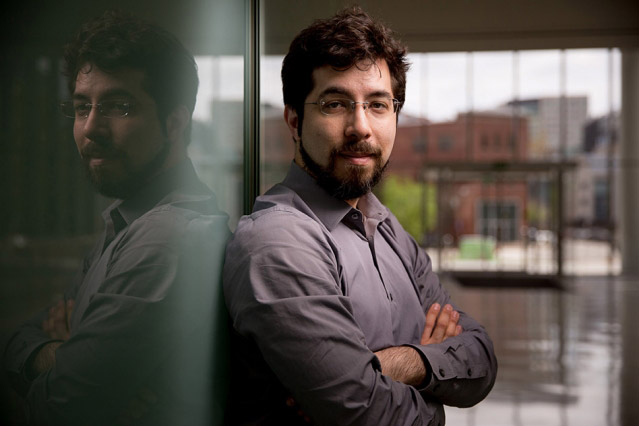“Humans and machines have been merging for thousands of years. Right now I’m wearing shoes, I have a microphone on my jacket, we all probably used our phones at least once today… And we communicate with the augmentation of all sorts of amplification and even translation technologies: You can speak into a machine, and it’ll translate the words you’re saying in nearly real time.
So I think what might be different in the years to come is a matter of degree, not a matter of kind. One concept that I think is emerging is what I like to call the brain coprocessor, a device that intimately interacts with the brain. It can upload information to the brain and download information from it. Imagine that you could have a technology that could replace lost memories or augment decision making or boost attention or cognition. To do that though we have to understand how the brain works at a very deep level.
Although over a third of a million patients have had brain implants or neural implants that stimulate the nervous system, so far they’ve operated in an open-loop fashion. That is, they drive activity in the brain, but not in a fully-responsive fashion. What we want to do is to have bi-directional communication to the brain: Can you read and write information continuously, and supply—maybe through coupling these interfaces to silicon computers— exactly the information the brain needs?
My hope is that over the next five to ten years we’re going to get deep insights thanks to our technologies into how brain circuits compute, and that will drive the design of these interfaces so that we can deliver information to the brain and record information from the brain using the natural language of the brain – reading and writing information in a way that augments, for example, the number of things you can hold in your mind at once. Or the ability to recall things nearly perfectly, which is, you know, not an ability so different from looking something up on a search engine on your phone, right?
So I think what’s going to happen is a continuation of this trend, and I think a lot of people like to talk about artificial intelligence right now. Artificial intelligence as it stands is based on a lot of concepts that go back many decades that build from some very simple observations about the brain.
What might A.I. do though, once we have incredibly deep insights into the nature of creativity and ethics (and other things that the human brain seems to be uniquely equipped for)?
I think once we start to couple artificial intelligence to the brain that can really augment these uniquely human capabilities, it leads to a new era of what you might call “hybrid intelligence”.
So it won’t just be A.I. running away in some positive-feedback loop; It won’t be humans upgrading themselves in the absence of coupling to the world; But I think it will yield a new kind of symbiosis. And I think that’s probably the best possible path, and it’s also already (if you look at how people operate in the world) what seems to be one of the most prevalent models.”

Who is Edward Boyden?
Edward Boyden is a Hertz Foundation Fellow and recipient of the prestigious Hertz Foundation Grant for graduate study in the applications of the physical, biological and engineering sciences. A professor of Biological Engineering and Brain and Cognitive Sciences at MIT, Edward Boyden explains how humanity is only at its infancy in merging with machines. His work is leading him towards the development of a “brain co-processor”, a device that interacts intimately with the brain to upload and download information to and from it, augmenting human capabilities in memory storage, decision making, and cognition. The first step, however, is understanding the brain on a much deeper level. With the support of the Fannie and John Hertz Foundation, Ed Boyden pursued a PhD in neurosciences from Stanford University.
The Hertz Foundation mission is to provide unique financial and fellowship support to the nation’s most remarkable PhD students in the hard sciences. Hertz Fellowships are among the most prestigious in the world, and the foundation has invested over $200 million in Hertz Fellows since 1963 (present value) and supported over 1,100 brilliant and creative young scientists, who have gone on to become Nobel laureates, high-ranking military personnel, astronauts, inventors, Silicon Valley leaders, and tenured university professors.

